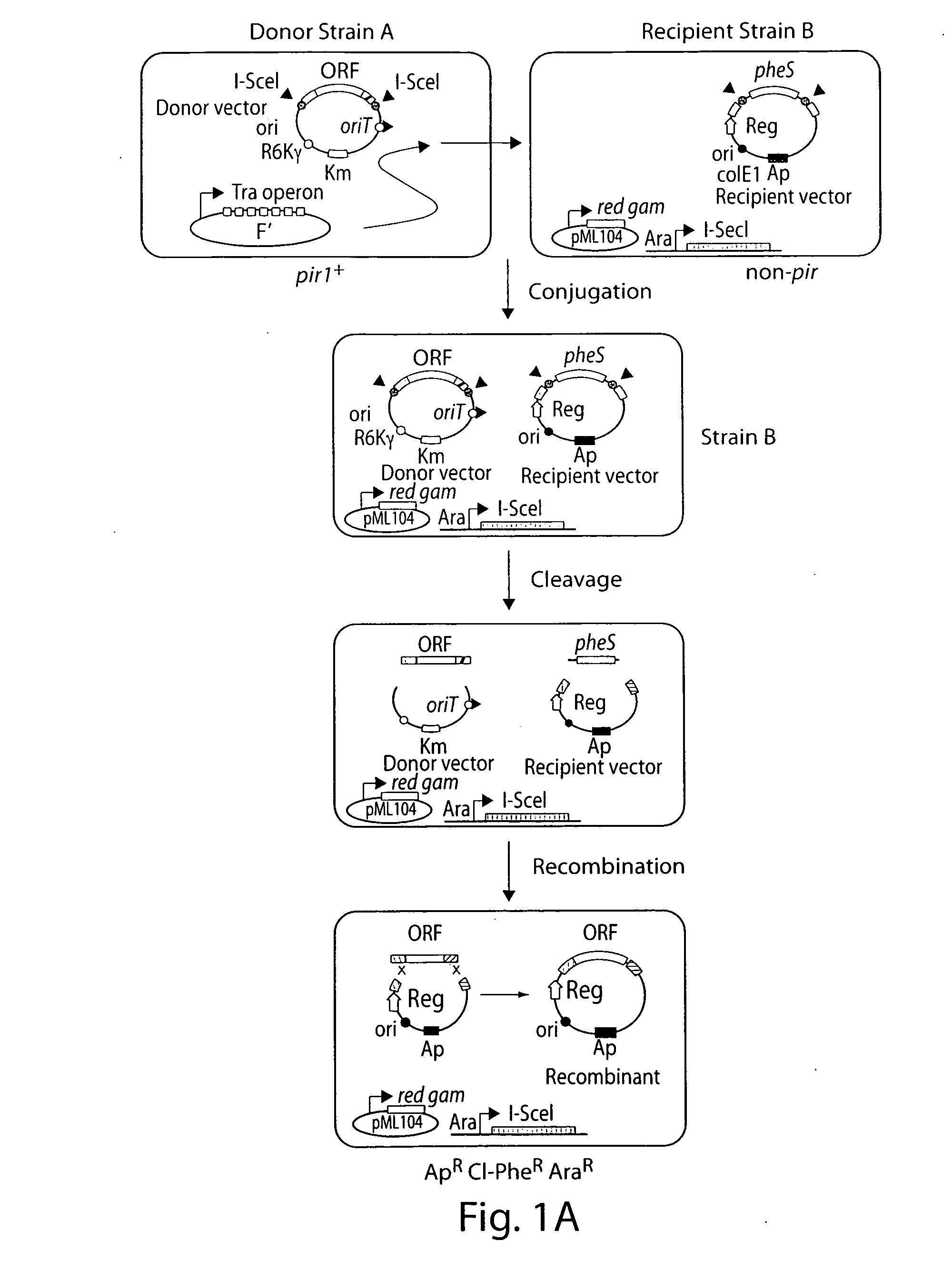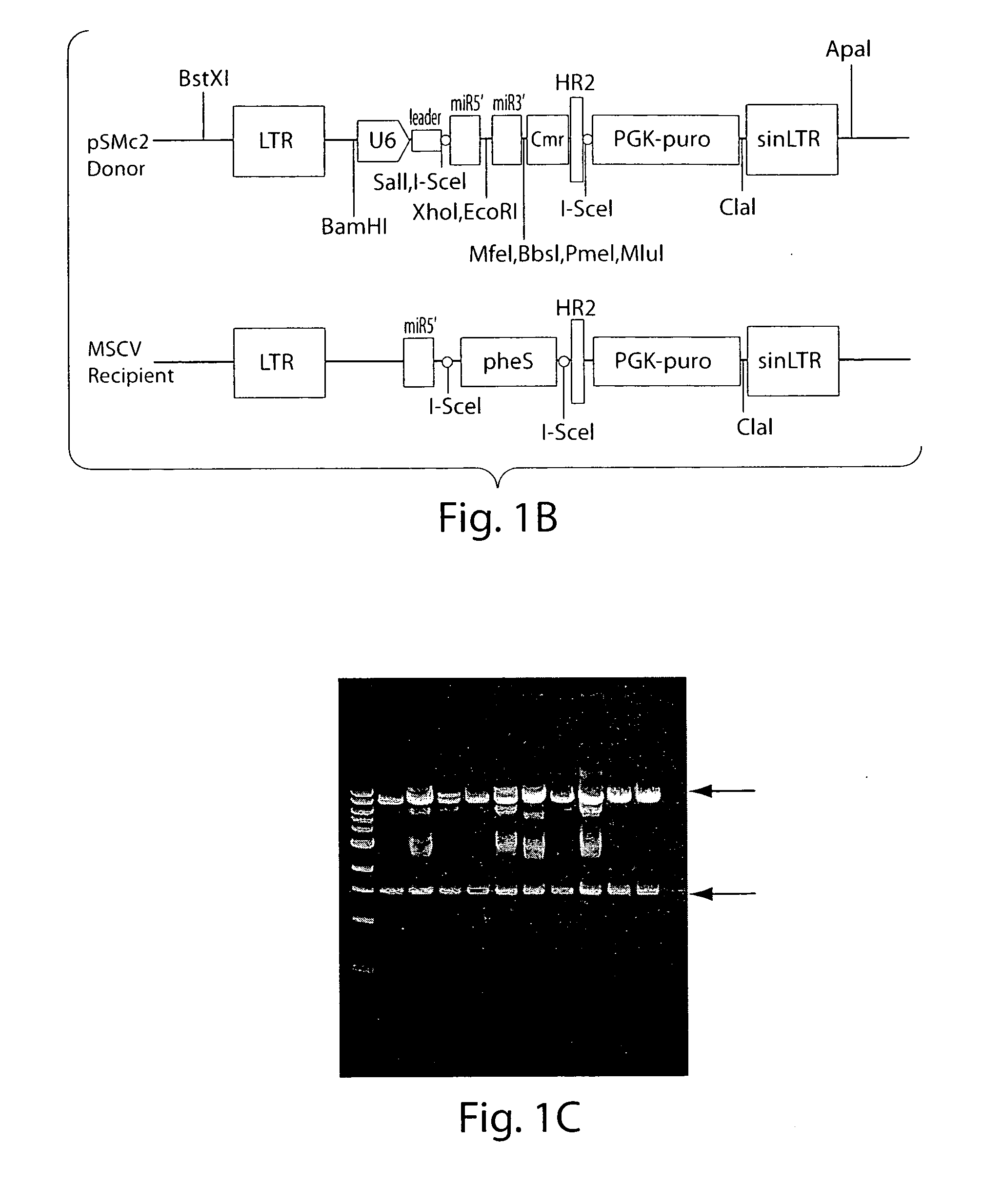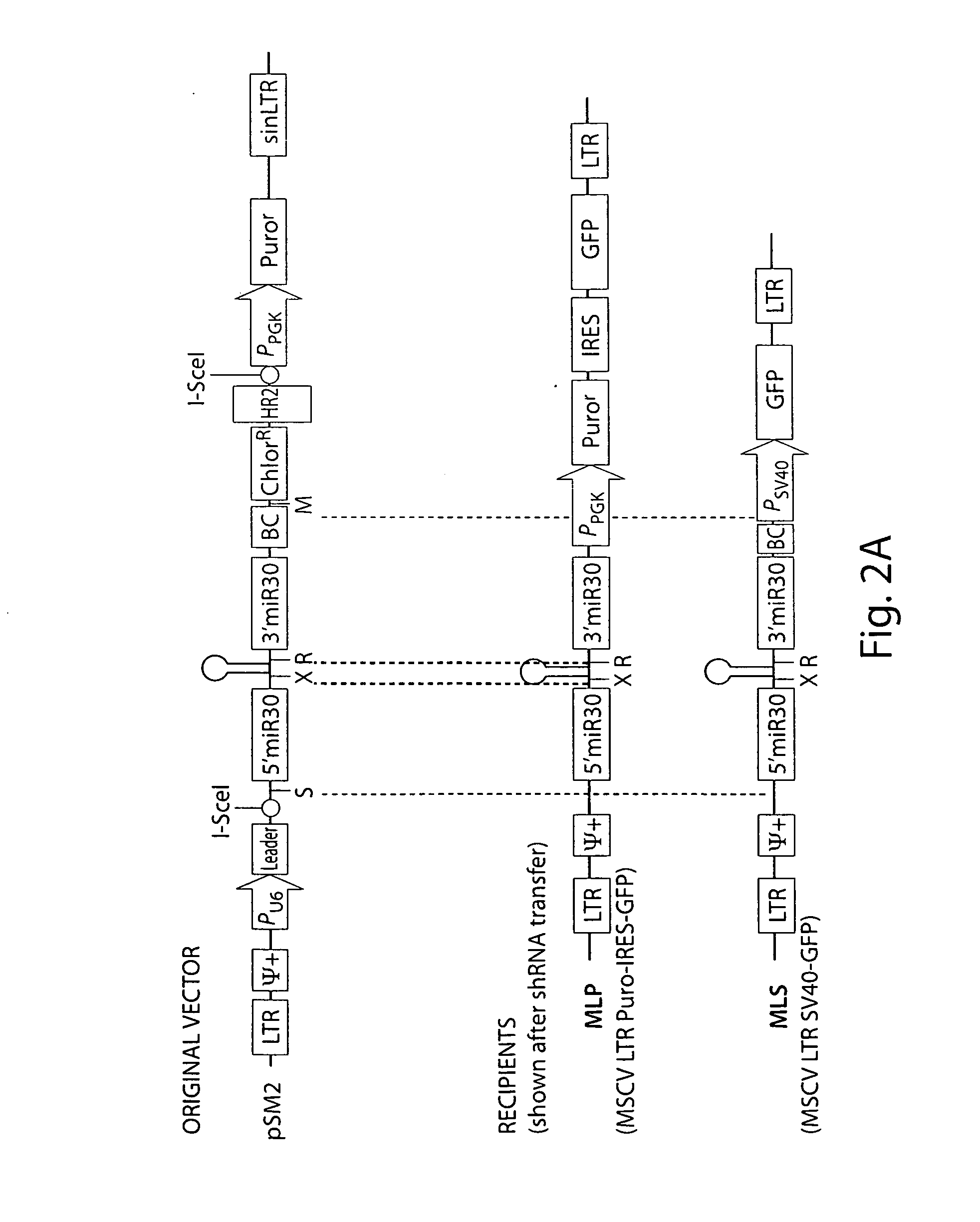Identification of genetic alterations that modulate drug sensitivity in cancer treatments
a technology of genetic alterations and cancer treatment, applied in the field of rna interference technology, can solve the problems of insufficient understanding of the mechanisms by which genetic mutations result in tumorigenesis or resistance to cytotoxic agents, and the inability to overcome resistance, so as to improve the effectiveness of a chemotherapy regimen.
- Summary
- Abstract
- Description
- Claims
- Application Information
AI Technical Summary
Benefits of technology
Problems solved by technology
Method used
Image
Examples
example 1
Selecting an RNAi Library
[0140]RNA interference (RNAi) exploits a mechanism of gene regulation whereby double stranded RNAs are processed by a conserved cellular machinery to suppress the expression of genes containing homologous sequences. Importantly, libraries of DNA-based vectors encoding short hairpin RNAs (shRNAs) capable of targeting most genes in the human and mouse genome have been produced and enable forward genetic screens to be performed in mammalian cells. Indeed, using human tumor-derived cell lines treated in vitro, RNAi has been used to evaluate potential drug targets, or to investigate mechanisms of drug action and drug resistance by screening for new molecules that modulate the response of tumor derived cell lines to a given chemotherapeutic agent.
[0141]As in vivo studies of drug sensitivity and resistance require stable gene knockdown, we performed our initial in vitro screens using retrovirally-encoded shRNAs based on the MiR-30 microRNA. Importantly, these shRNA...
example 2
Subcloning the “Cancer 1000” Library into Recipient Vectors
[0145]To improve gene knockdown and facilitate in vivo experiments, all of the existing murine shRNAs targeting the cancer 1000 set (˜2300 shRNAs, 2-3 shRNAs per gene) were cloned into an MSCV-based vector that co-expressed green fluorescent protein. Briefly, a MiR-30-based shRNA library targeting the cancer 1000 gene set was subcloned into LMP and LMS (MSCV-based vectors) in pools of 96 or 48 shRNAs, respectively. Targeting sequences were selected based on RNAi Codex algorithms or BIOPREDsi design.
[0146]Two methods were used to subclone the “Cancer 1000” library into recipient vectors. The first method was bacterial mating, using “Mating-Assisted Genetically Integrated Cloning” (MAGIC) (Li and Elledge, 2005). The MAGIC system consists of a donor vector (the library vector), in which the fragment of interest is flanked by two different homology regions, H1 and H2, which in turn are flanked with linked I-SceI sites. The donor...
example 3
A Rapid RNAi Enrichment Screen to Identify Mediators of Doxorubicin Resistance
[0150]The Cancer 1000 shRNA set, generated in Examples 1 and 2, was used to screen and identify mediators of the response to chemotherapy. Chemotherapy resistance is not merely caused by defects in the apoptotic or senescence response to chemotherapy, but encompasses all of the processes from cellular drug metabolism and bioavailability, drug target accessibility right through to the final execution of the cellular outcome. All of these relevant factors may be probed using a genuine therapy-based screen. Here, due to relative simplicity, the primary focus was on positive selection screens, i.e., finding gene knockdowns that cause resistance to chemotherapy.
[0151]Our initial screening for shRNAs capable of conferring doxorubicin resistance was carried out in a murine Eμ-Myc Arf− / − lymphoma system, which retain the p53 tumor suppressor and an intact DNA damage response (Schmitt et al., 2002). The Eμ-Myc lymp...
PUM
| Property | Measurement | Unit |
|---|---|---|
| resistance | aaaaa | aaaaa |
| chemo-resistance | aaaaa | aaaaa |
| genome stability | aaaaa | aaaaa |
Abstract
Description
Claims
Application Information
 Login to View More
Login to View More - R&D
- Intellectual Property
- Life Sciences
- Materials
- Tech Scout
- Unparalleled Data Quality
- Higher Quality Content
- 60% Fewer Hallucinations
Browse by: Latest US Patents, China's latest patents, Technical Efficacy Thesaurus, Application Domain, Technology Topic, Popular Technical Reports.
© 2025 PatSnap. All rights reserved.Legal|Privacy policy|Modern Slavery Act Transparency Statement|Sitemap|About US| Contact US: help@patsnap.com



